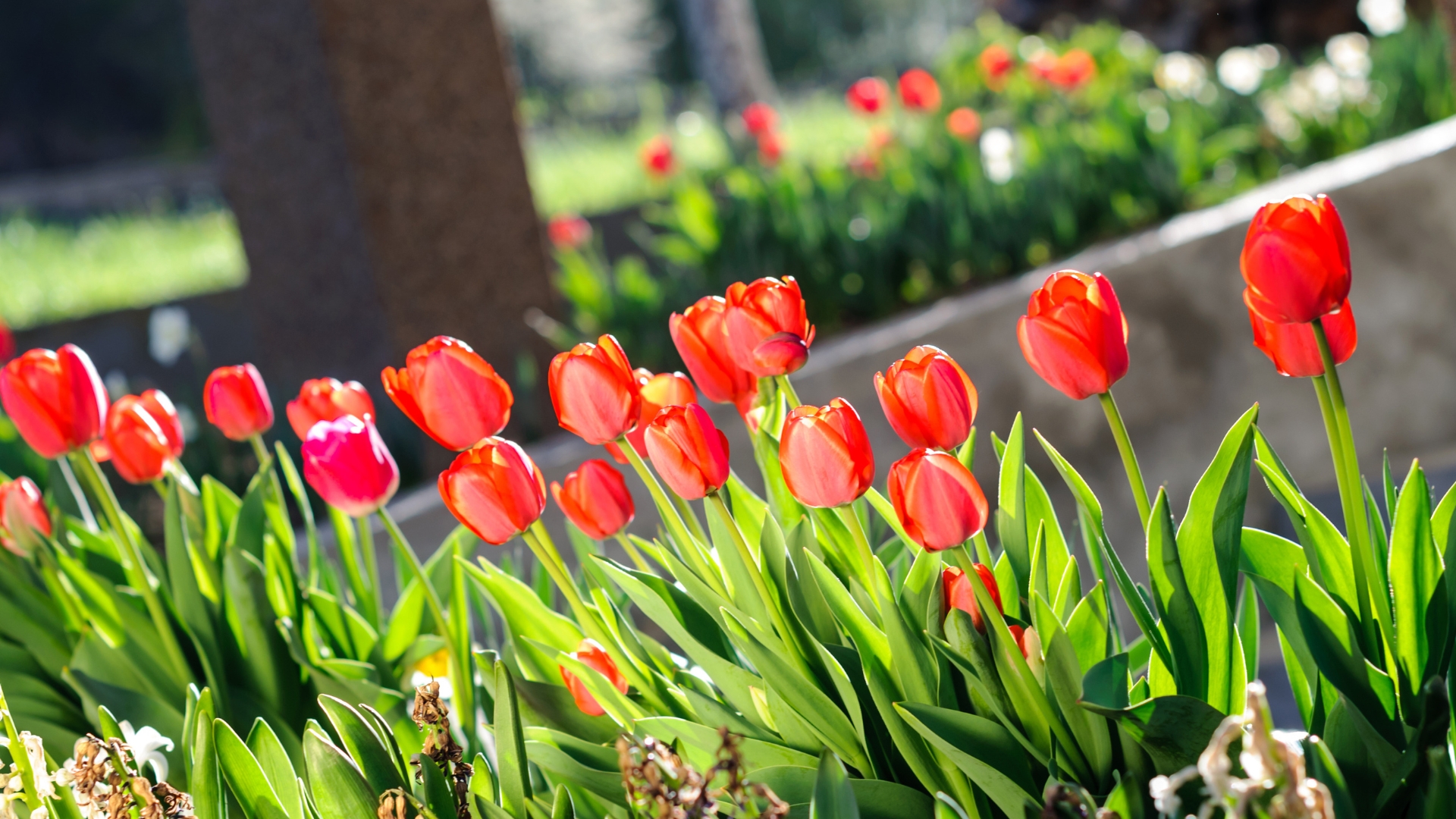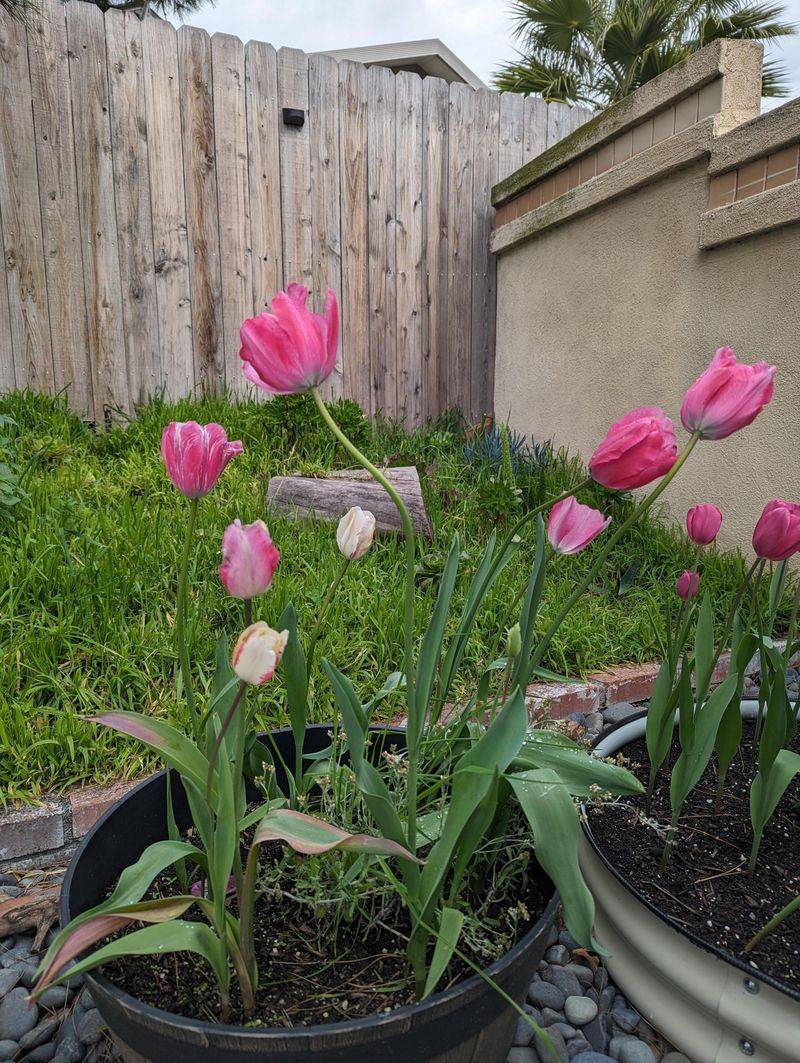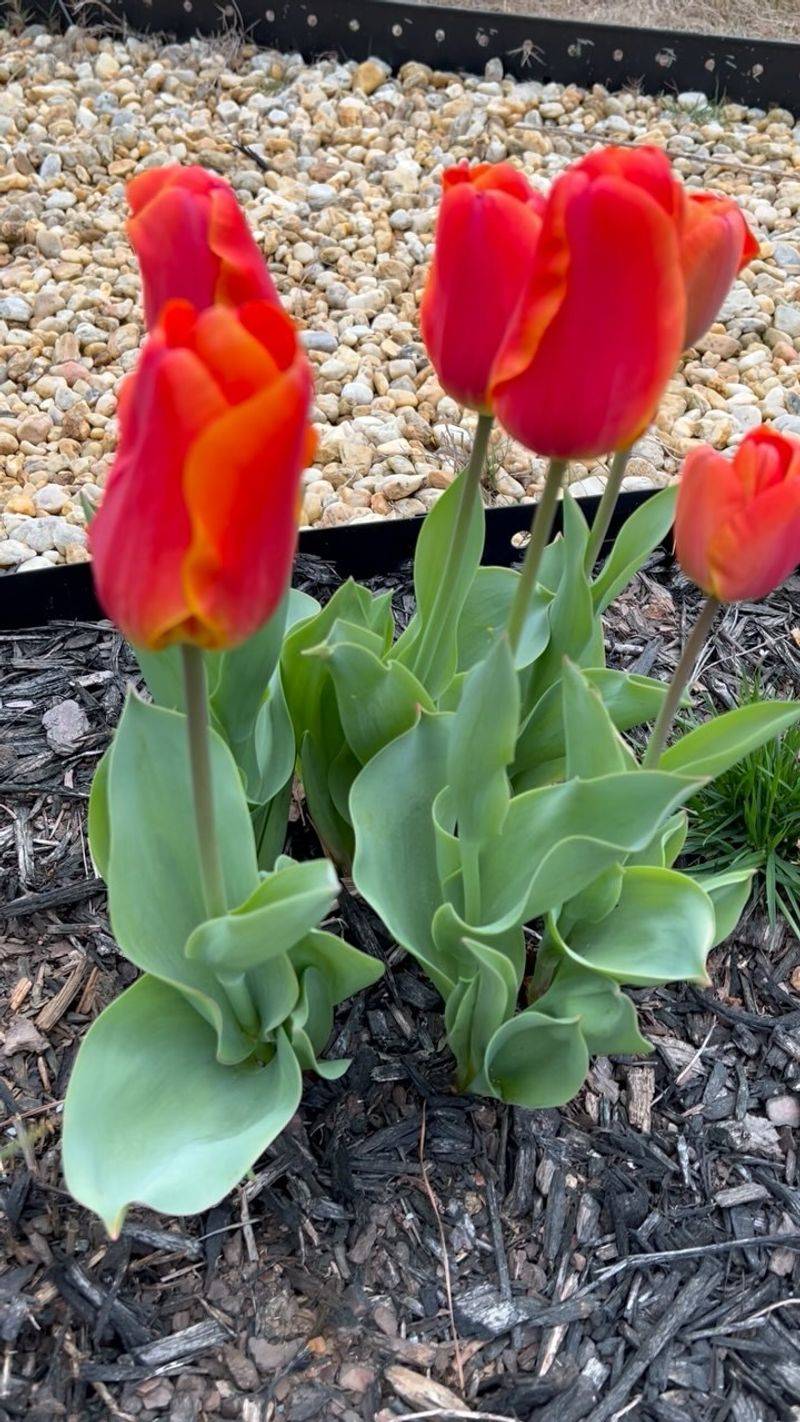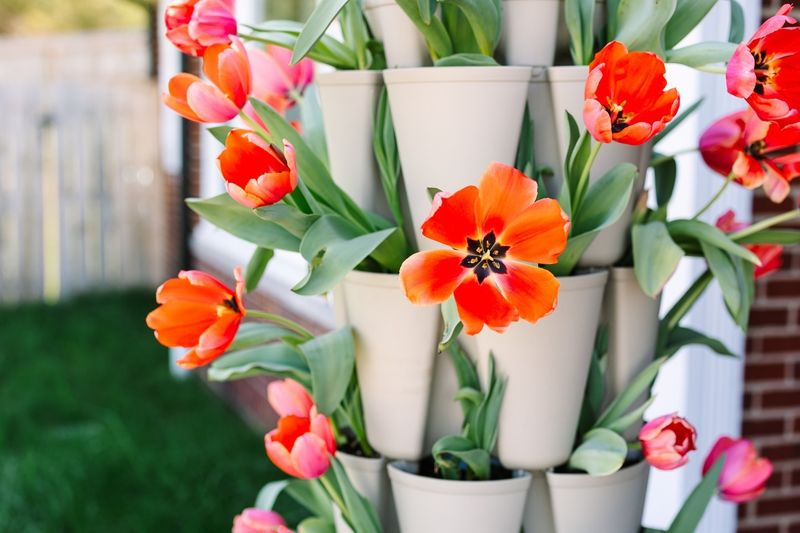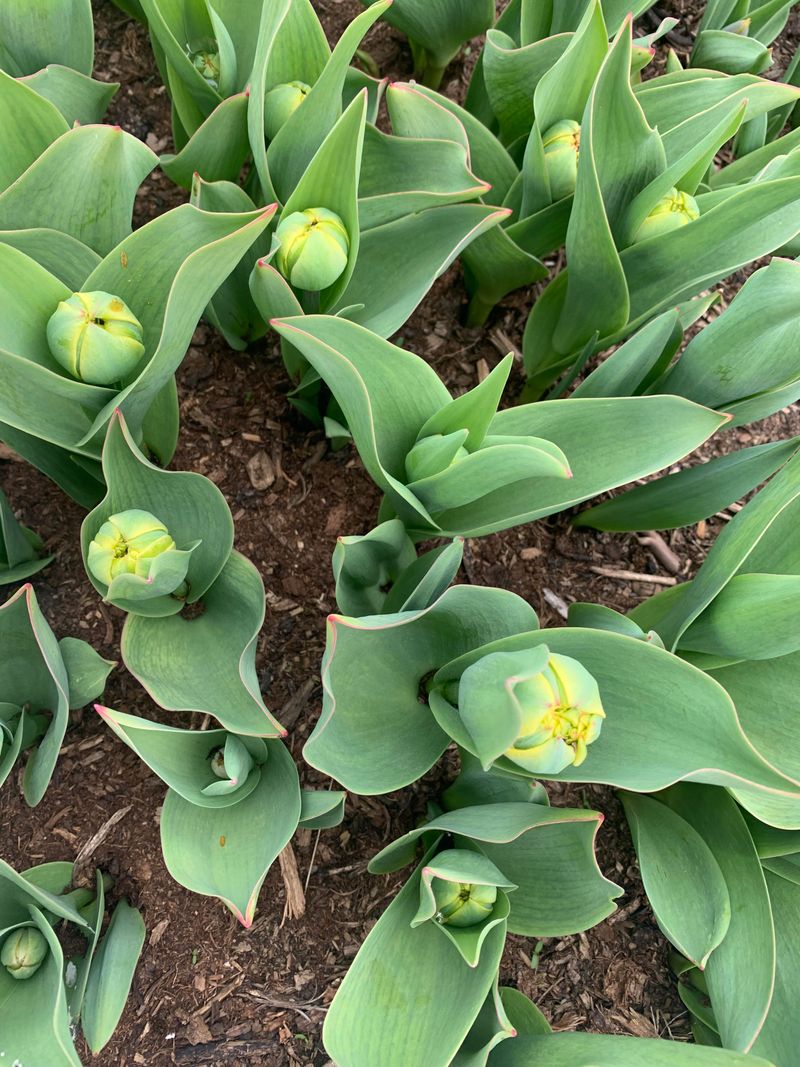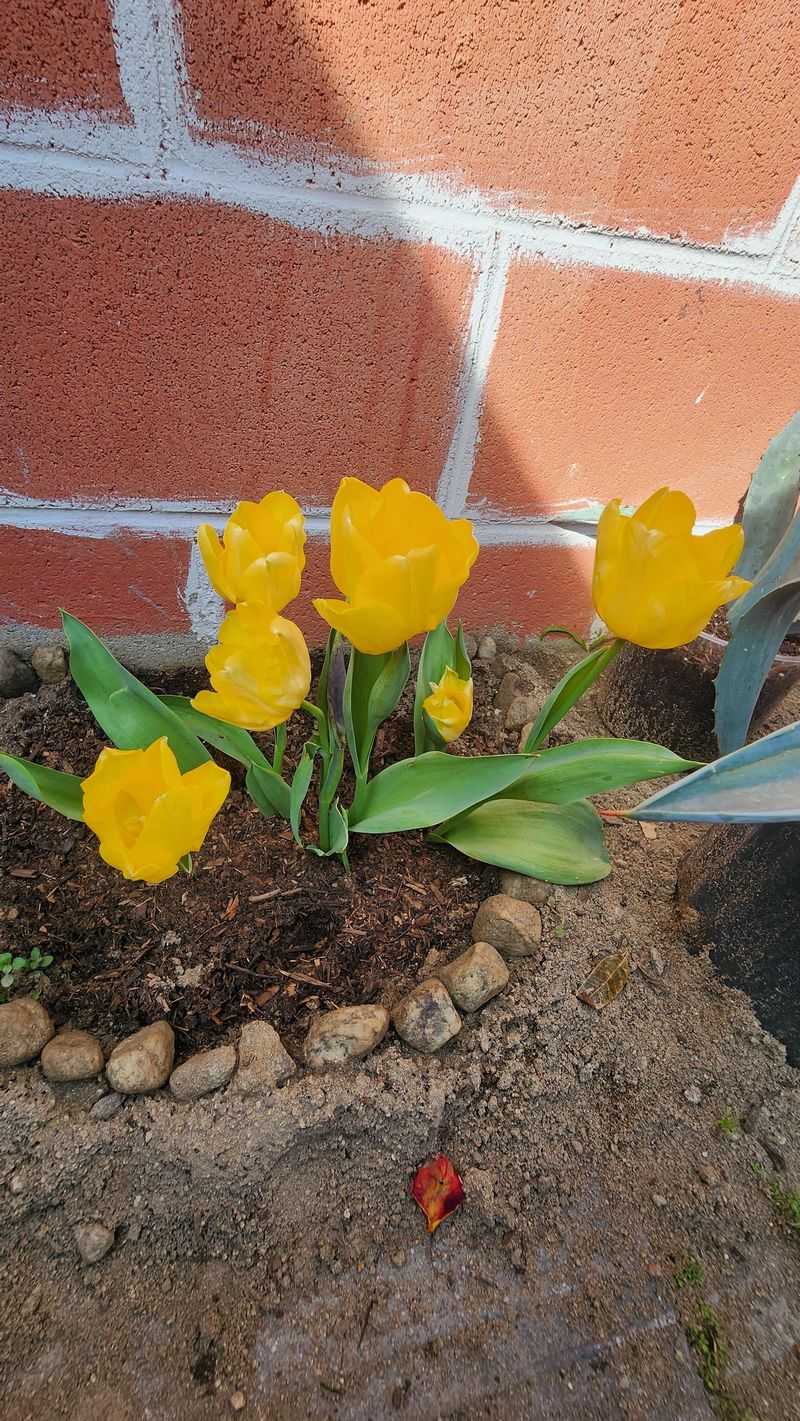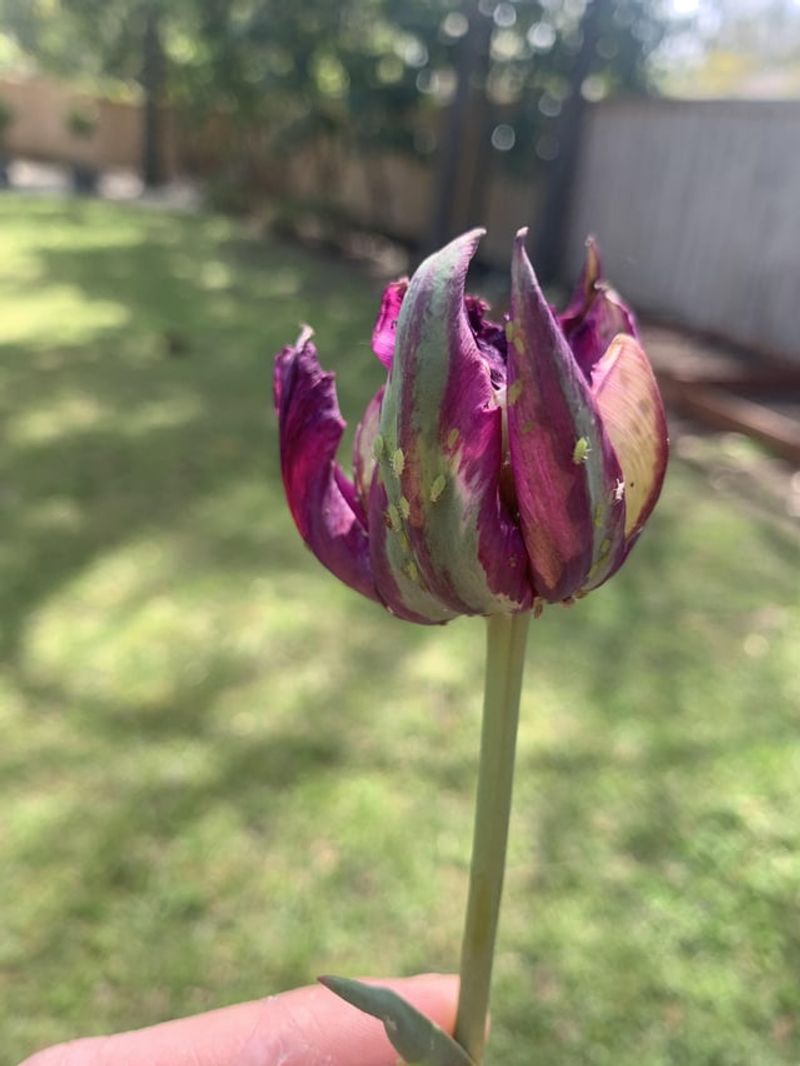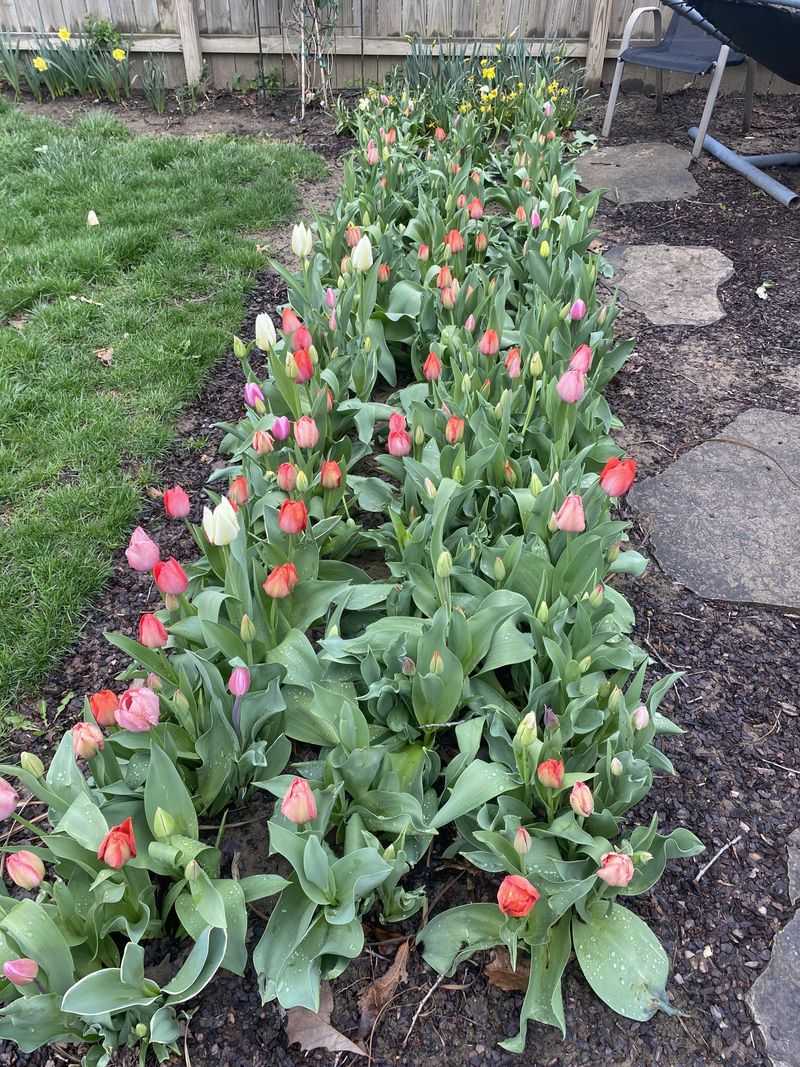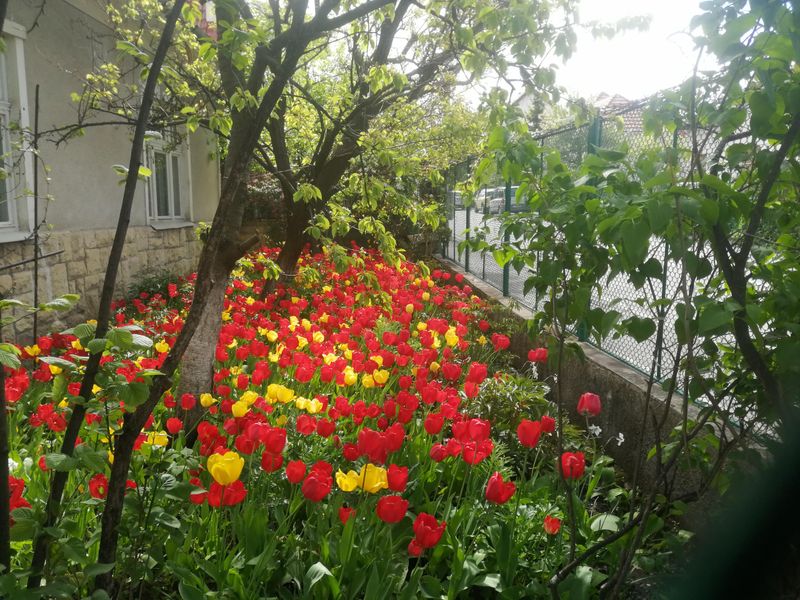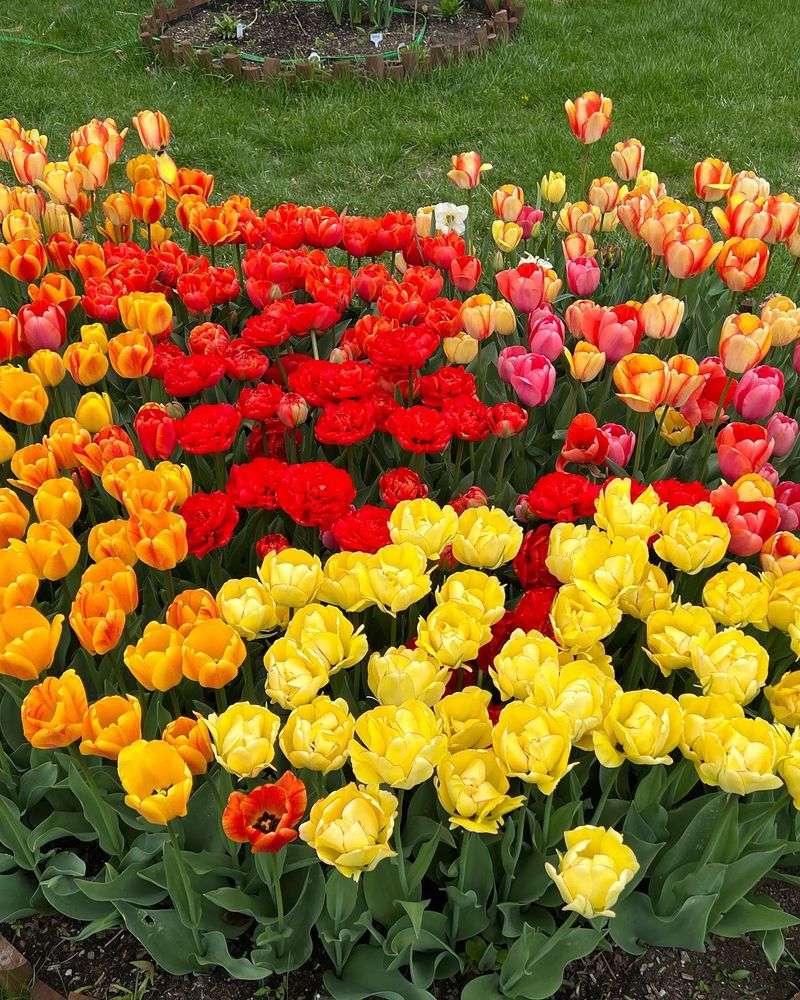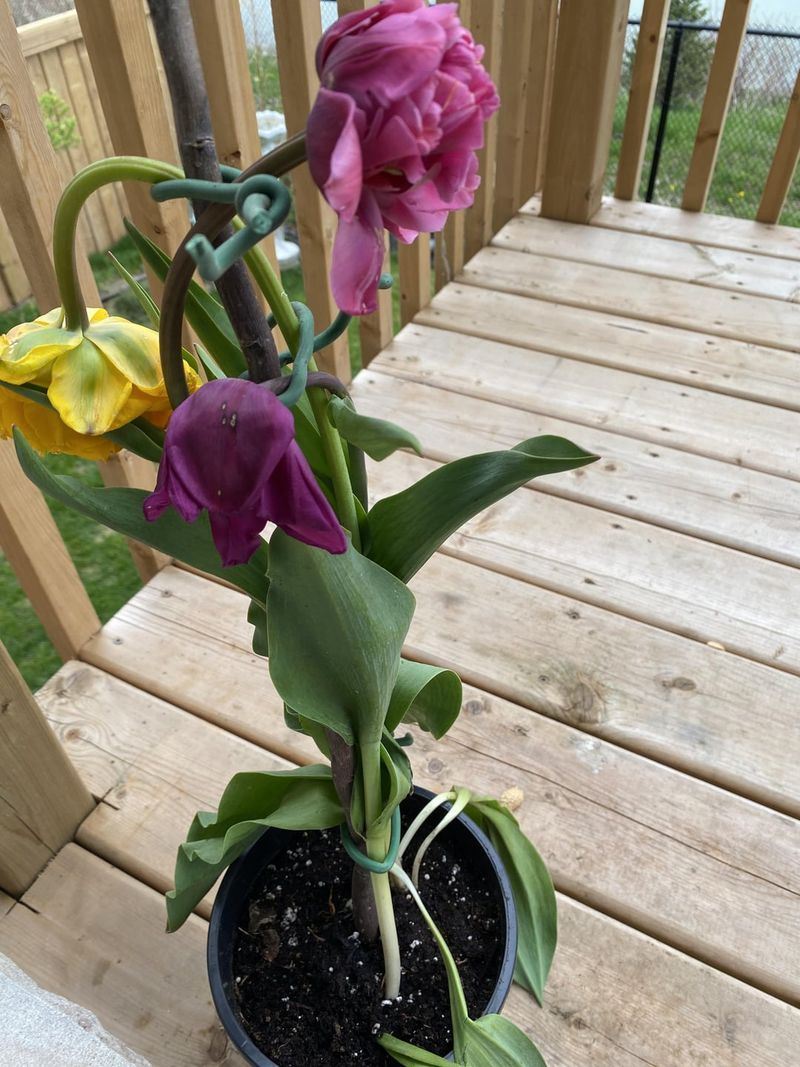Tulips may seem easy, but they’ve got a few quirks that can trip you up if you’re not careful. I’ve definitely made some of these mistakes myself—so consider this your friendly heads-up.
These 13 common slip-ups can mean the difference between a blooming success and a flower flop. A little planning goes a long way when it comes to keeping tulips happy.
Let’s make sure your spring garden is full of color, not regrets!
1. Planting at the Wrong Time
Fall is tulip planting season, not spring! Many new gardeners make the mistake of trying to plant tulips when other spring flowers go in the ground. Tulip bulbs need a cold period to develop properly.
Plant them 6-8 weeks before the ground freezes in your area. This gives them enough time to develop roots before winter sets in but not so much time that they start sprouting prematurely.
2. Ignoring Soil Drainage
Soggy soil is a death sentence for tulips. Bulbs sitting in waterlogged ground will quickly rot, destroying your spring display before it begins. Good drainage is absolutely essential for healthy tulips.
Sandy or loamy soil works best. If your garden has heavy clay soil, mix in some coarse sand, perlite, or compost to improve drainage. Alternatively, consider creating raised beds or mounds for better water flow.
3. Shallow Planting Depths
Planting tulips too close to the surface is asking for trouble. Shallow bulbs are vulnerable to temperature fluctuations and may emerge too early, only to be damaged by late frosts.
The general rule is to plant tulip bulbs at a depth of three times their height. For most tulips, this means 6-8 inches deep. Proper depth protects bulbs from weather extremes and helps prevent them from dividing into smaller, non-flowering bulbs.
4. Overcrowding Your Bulbs
Cramming too many tulips together might seem like a good way to create an impressive display, but it actually weakens all your plants. Overcrowded bulbs compete for nutrients and water, resulting in smaller, weaker flowers.
Space large tulip varieties about 4-6 inches apart and smaller ones 3-4 inches apart. This gives each plant enough room to develop properly and helps prevent fungal diseases that thrive in poor air circulation.
5. Forgetting to Feed
Tulips are hungry plants that deplete soil nutrients quickly. Many gardeners plant them and forget them, then wonder why blooms are disappointing in subsequent years.
Feed tulips twice yearly for best results. Apply a balanced bulb fertilizer when shoots first appear in spring and again after flowering. Avoid high-nitrogen fertilizers which promote lush foliage at the expense of future blooms.
6. Cutting Foliage Too Soon
After tulips finish blooming, their leaves may look untidy, but removing them too early is a serious mistake. Those green leaves are factories producing energy that gets stored in the bulb for next year’s flowers.
Wait until the foliage has completely yellowed and dried before removing it, usually about 6 weeks after blooming. If the sight bothers you, consider planting perennials nearby whose growth will help hide the fading tulip leaves.
7. Improper Watering Habits
Both overwatering and underwatering can spell disaster for tulips. Too much moisture leads to bulb rot, while too little results in stunted growth and poor flowering.
Water newly planted bulbs thoroughly, then hold off unless there’s a drought. Once growing, tulips need about an inch of water weekly during dry spells. Stop additional watering after blooming as the plants enter dormancy.
8. Neglecting Pest Protection
Squirrels, chipmunks, mice, and voles consider tulip bulbs a delicious treat. Many gardeners are heartbroken to discover their carefully planted bulbs have become rodent snacks before spring arrives.
Protect your investment by placing chicken wire just above planted bulbs or mixing sharp gravel into the planting hole. Blood meal sprinkled on the soil surface can also deter digging pests, though it needs reapplication after rain.
9. Choosing the Wrong Varieties
Not all tulips are created equal when it comes to perennial performance. Species tulips and Darwin hybrids typically return for many years, while many fancy varieties are essentially one-hit wonders.
If you want tulips that reliably return each year, research varieties known for perennializing well in your climate zone. For spectacular but short-lived displays, treat showy varieties as annuals and replant fresh bulbs each fall.
10. Planting in Too Much Shade
Tulips need sunshine to produce strong stems and vibrant blooms. Placing them in too much shade leads to weak, leggy plants that flop over and produce smaller, less colorful flowers.
Choose planting locations that receive at least 6 hours of direct sunlight daily, especially in spring when tulips are actively growing. Areas that get morning sun are ideal since they allow foliage to dry quickly, reducing disease problems.
11. Skipping Soil Preparation
Poor soil leads to poor tulips, yet many gardeners simply dig holes and drop bulbs in without improving the planting area. Tulips thrive in rich, well-draining soil with the right pH.
Before planting, work in compost or well-rotted manure to a depth of 12 inches. Tulips prefer slightly alkaline conditions, so add a handful of bone meal to each planting area to provide phosphorus and raise pH slightly if your soil is acidic.
12. Ignoring Climate Considerations
Tulips evolved in cold winters and hot, dry summers. Trying to grow them in climates with mild winters or humid summers often leads to disappointment after the first year.
In warm regions (zones 8-10), pre-chill bulbs in the refrigerator for 6-8 weeks before planting. Consider treating tulips as annuals in these areas. In humid climates, plant in raised beds with excellent drainage and choose disease-resistant varieties.
13. Leaving Dead Flowers Attached
When tulips finish blooming, their natural instinct is to produce seeds, which drains energy from the bulb. This seed production significantly reduces next year’s flower quality and size.
Remove spent flowers promptly by snipping off the swelling seed pod just below the flower. Leave the stem attached to the plant. This deadheading process redirects energy back to the bulb instead of wasting it on seed production.

